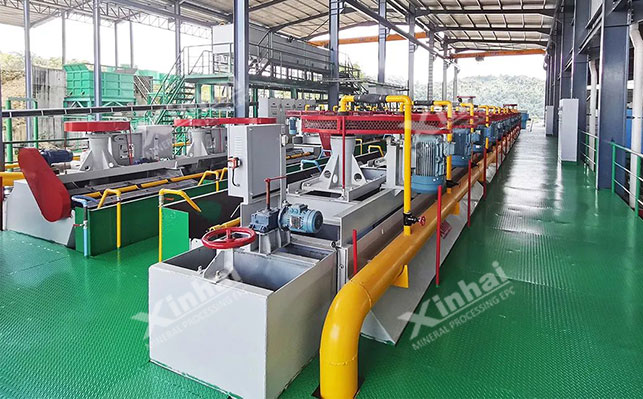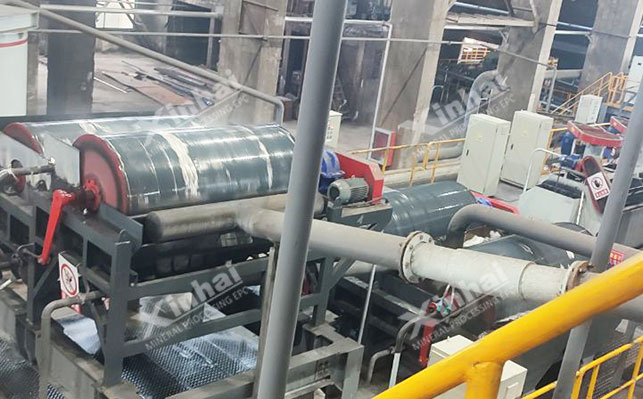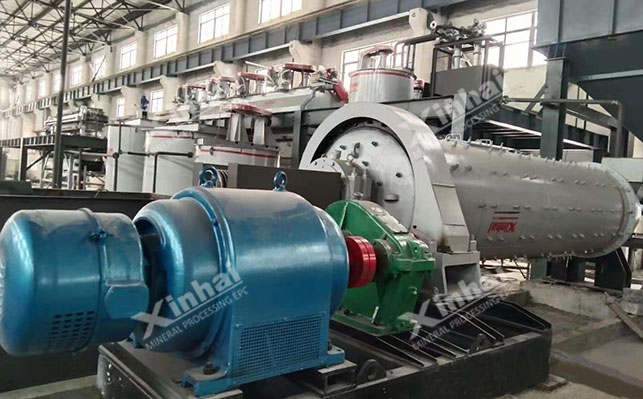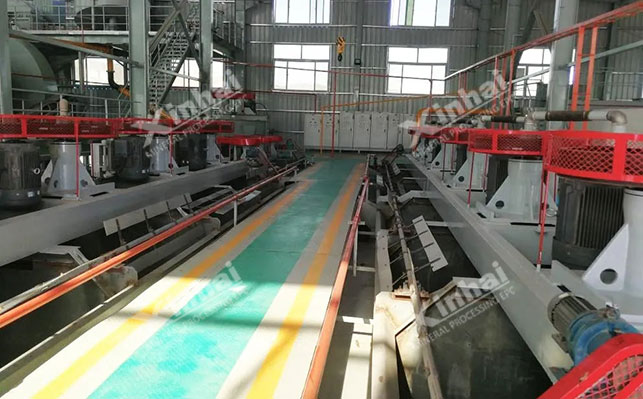
15311826613
Click to add WeChatClassification of copper ore From the perspective of sorting, copper ore can be divided into oxide ore, sulfide ore and mixed ore. According to the number of useful minerals or valuable elements contained in the ore, copper ore can be divided into single copper ore and polymetallic copper ore. According to the copper content in the copper ore, it can be divided into rich copper ore, medium copper ore, poor copper ore and extremely poor copper ore. The main sorting method of copper minerals is flotation, and other methods are used when dealing with difficult-to-select oxide ores. Copper minerals use xanthate collectors and pine oil foaming agents. According to the different properties of copper ore, its beneficiation methods are also different. The following will introduce you to the sorting technology of different types of copper ore.

Copper-sulfur ore contains copper sulfide minerals and iron sulfide ore, which can generally be divided into two types:
1. Copper-containing pyrite: The content of gangue minerals is small, and the method of preferential flotation of copper sulfide ore is often used. The tailings after copper flotation are sulfur concentrates.
2. Copper-containing iron ore: The content of copper sulfide minerals and iron sulfide minerals in the ore is low, and the content of gangue minerals is high. Ore dressing plants often use mixed flotation processes to process this type of ore. First, copper sulfide and iron sulfide minerals are mixed and floated out. After discarding the tailings, the mixed concentrate is re-grinded and separated.
The flotation methods of copper-sulfur ores can be divided into two categories, namely magnetization first and then flotation and floatation first and then magnetization. Production practice has proved that when the magnetic first and then flotation process is selected, pyrrhotite will enter the magnetite concentrate during magnetic separation, affecting the mineral processing indicators. Therefore, ore dressing plants often choose the flotation first and then magnetic solution: first float out the sulfide ore, and then magnetite is magnetically separated in the tailings. During the process, attention should be paid to strengthening the flotation of iron sulfide ore when flotating sulfide ore, and try to float out all the pyrrhotite, otherwise when magnetically separating magnetite, pyrrhotite will be mixed into the iron concentrate, affecting the quality of the iron concentrate. If pyrrhotite is mixed with iron concentrate, the iron concentrate needs to be desulfurized if necessary, and the pyrrhotite should be removed by reverse flotation.

In the flotation process of complex sulfide ores, the separation of copper-zinc ores is relatively difficult. There are two main reasons: First, the minerals are densely coexisting, and chalcopyrite exists in sphalerite in the form of fine-grained impregnation, which is difficult to dissociate into monomers; second, the surface of zinc ore is activated by copper ions, and its floatability is similar to that of copper minerals, which can easily cause separation difficulties.
In order to improve the copper-zinc separation effect, the following measures can be taken:
1. The copper ions in the slurry are precipitated to prevent the activation of sphalerite. Sodium sulfide can be used as a reagent. In addition to sodium sulfide, cation exchange resin can also be used. Adding it to the ball mill can adsorb copper ions in the slurry to prevent copper ions from activating sphalerite.
2. Sodium cyanide, sulfuric acid and other deactivators are used to remove copper ions adsorbed on the surface of sphalerite.
3. Before separating the zinc mixed concentrate, remove the drug. Use activated carbon or sodium sulfide to remove the collector on the surface of the ore particles to facilitate separation.

The copper-lead separation scheme is mainly divided into two types: floating copper suppression and floating lead suppression. The methods used by the ore dressing plant are mainly the following:
1. Dichromate method:Dichromate is used to suppress the flotation of galena copper minerals. This method has a better inhibitory effect on oxidized galena.
2. Cyanide method:Since cyanide has a strong inhibitory effect on chalcopyrite, but almost no inhibitory effect on galena, this method is mainly used to suppress copper and float lead.
3. Oxygen-sulfur method:Use sulfur dioxide or sulfite combined with other inhibitors to inhibit the flotation of galena and chalcopyrite.
4. Heating method:First, use steam to heat the copper-lead mixed concentrate to about 60°C. In the acidic or neutral slurry, the collector on the surface of galena is desorbed, the surface is oxidized and hydrophilic, and the chalcopyrite still floats.

The above is a brief introduction to copper mineral sorting technology. Copper ore often coexists with lead, zinc and other minerals. In order to rationally utilize mineral resources, it is necessary to consider the composition of the original ore and the proportion of useful minerals in the mixed concentrate obtained by sorting. Only in this way can the appropriate beneficiation method be selected to reduce the impurity content in the concentrate and improve the quality and grade of the concentrate.